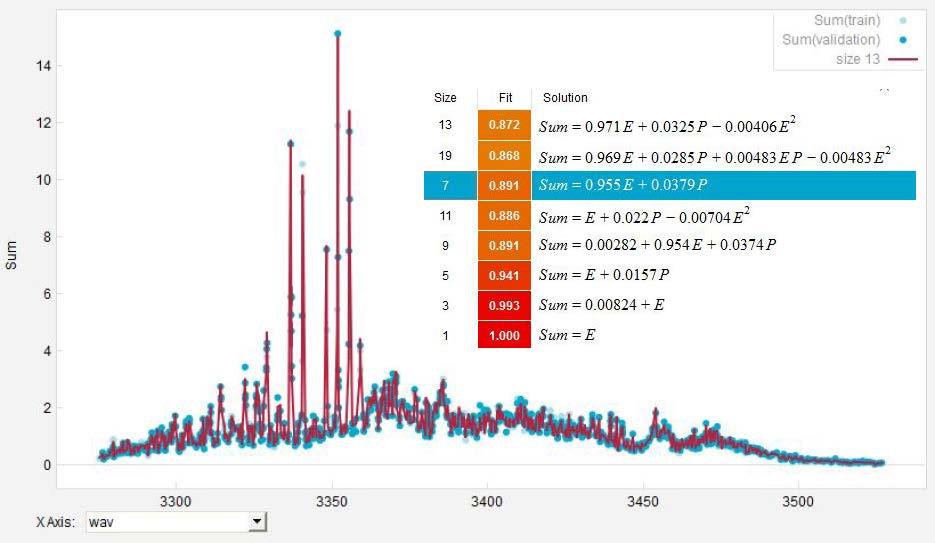Photoacoustic spectroscopy allows the identification of specific molecules in gases. We evaluate the spectral resolution and detection limits for a PAS system in the broadband infrared wavelength region 3270 nm ≲ λ ≲ 3530 nm driven by a continuous wave optical parametric oscillator with P ≈ 1.26 W by measuring the absorption of diluted propane, ethane and methane test gases at low concentrations c ~ 100 ppm for ~1350 discrete wavelengths λi. The resulting spectra IPAS(λi) were compared to the high resolution cross section data σFTIR obtained by Fourier Transform Infrared Spectroscopy from the HITRAN database. Deviations as little as 7.1(6)% for propane, 8.7(11)% for ethane and 15.0(14)% for methane with regard to the average uncertainty between IPAS(λi) and the expected reference values based on σFTIR were recorded. The wavelengths λres of the characteristic absorption lines can be pinpointed with a high relative accuracy <5 × 10−5 corresponding to a resolution of λres ~ 0.16 nm. Detection limits range between 7.1 ppb (ethane) to 13.6 ppb (methane) coinciding with high experimental signal-to-noise ratios. Moreover, using EUREQA, an artificial intelligence program, simulated mixed gas samples at low limits of detection could be deconvoluted. These results justify a further development of PAS technology to support, e.g., biomedical research.

